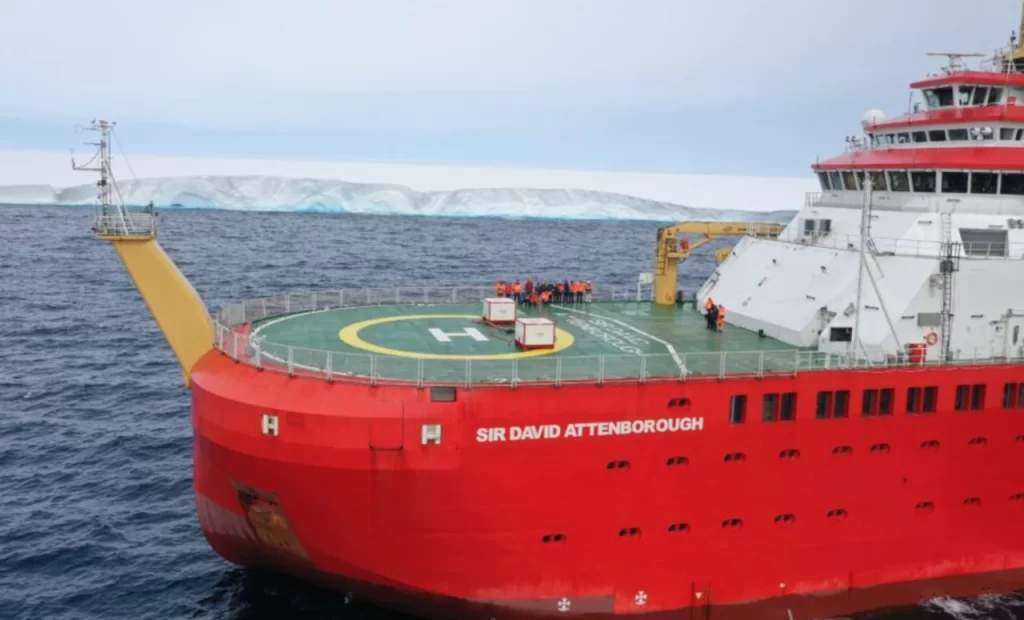On December 1, the RRS Sir David Attenborough, which was on its way to Antarctica for its first-ever scientific expedition, traversed the Antarctic Peninsula and came face to face with the A23a iceberg, which is the largest iceberg in the world. The massive iceberg is approximately 3,900 square kilometres and 400 metres in height.
The RRS Sir David Attenborough, named after the well-known British naturalist, is currently on a scientific expedition that will last for ten days and cost 13.3 million dollars.
This project examines how Antarctic ecosystems and sea ice influence global ocean cycles of carbon and nutrients. The findings of this investigation will provide essential insights into the effects of climate change on the Southern Ocean and the unique animals that live there.
On board the research ship, scientists under the direction of Chief Scientist Andrew Meijers made the most of the opportunity to investigate the environment surrounding the iceberg. It is anticipated that the A23a would travel along the common route commonly referred to as “iceberg alley,” which will lead it to the sub-Antarctic island of South Georgia.

The ship’s crew, including the scientist Laura Taylor, gathered samples of ocean surface water to investigate the influence of enormous icebergs on marine ecosystems and carbon dynamics.
It is common knowledge that these enormous icebergs can supply the waters they swim through with nutrients, fostering the growth of robust ecosystems in regions that would otherwise be less productive. The difference that certain icebergs, their size, and their origins can make to that process is unknown, according to Taylor’s explanation.
The enormous iceberg, three times the size of New York City and more than twice the size of Greater London, had been stranded in the Weddell Sea for over three decades when it finally made its way into the Southern Ocean.



